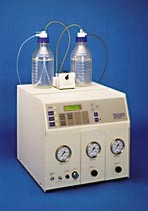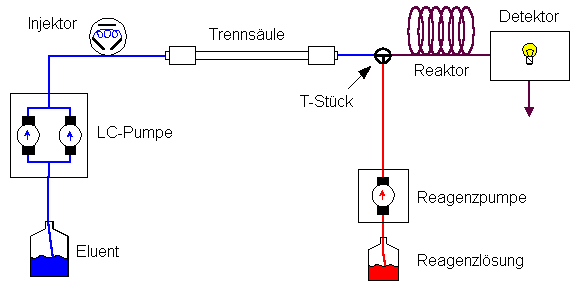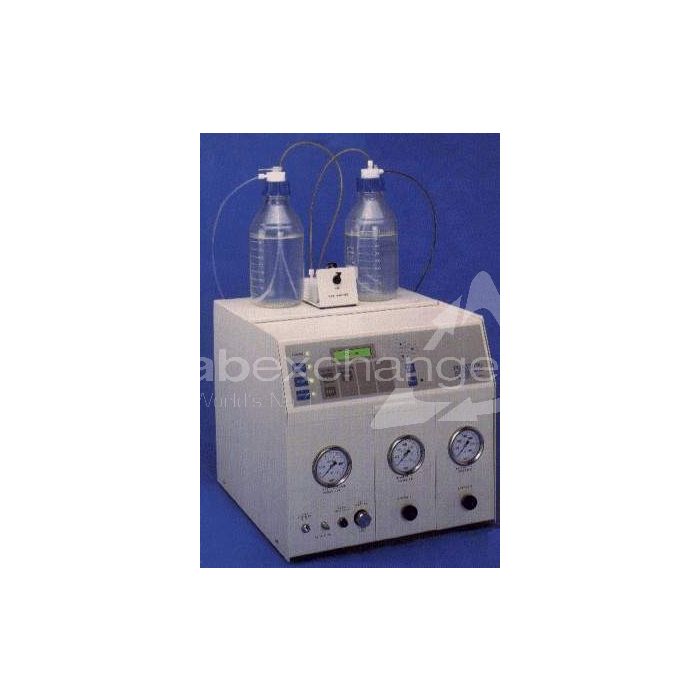Pickering PCX 5200
| Objektnummer | B00014962 |
|---|---|
| Seriennummer | 014962 |
| Object Naam | Pickering PCX 5200 |
| Status | Stock unit |
Product groep: HPLC diversen
Status, leverings- en betalingsvoorwaarden
Apparatuurcontrole
De gebruikte apparatuur wordt voorafgaand aan levering gecontroleerd door Labexchange Service GmbH. U ontvangt volledig functionerende apparatuur.
Verzending
De vermelde verzendtijden zijn telkens de kortste voor een artikel. In bepaalde gevallen kunnen de daadwerkelijke verzendtijden daarvan afwijken. De uiteindelijke verzendtijden worden aangegeven in de opdrachtbevestiging.
In de regel bieden we combinatieleveringen aan. Levertijden zijn afhankelijk van het artikel met de langste levertijd. Deelleveringen zijn mogelijk tegen een toeslag.
Verzendmethoden
Koeriersdiensten, transportbedrijven, zelf afhalen, levering door Labexchange wagenpark
Informatie levering
De prijzen zijn exclusief verzendkosten. De genoemde verzendkosten zijn de te verwachten kosten. Afwijkingen zijn mogelijk. In het geval geen kosten voor verzending zijn gespecificeerd, vraag die dan afzonderlijk aan.
De opgegeven vracht- en verpakkingskosten hebben betrekking op de goedkoopste transportroute en zijn onder voorbehoud van onvoorziene kostenstijgingen. Door onvoorziene gebeurtenissen kunnen vrachttarieven en levertijden op elk moment veranderen en moeten ze worden aangepast aan de huidige situatie. Incoterm coderingen volgens Incoterms 2010: Bij afhalen EXW, CFR voor zendingen over zee, CPT per luchtfracht, andere zendingen DAP. Opmerking: We geven geen preferentieel certificaat/EUR1 af. Bij zelf afhalen/af fabriek (EXW) uit derde landen en de EU wordt 16% btw als borg ingehouden, tot we de ontvangstbevestiging/het leveringscertificaat van de koper hebben ontvangen.
Betalingsvoorwaarden
Wij accepteren geen betalingen Letter of Credit, PayPal etc. Het factuurbedrag is volledig verschuldigd. Er zijn geen betalingskortingen. De goederen blijven tot volledige betaling ons eigendom.
|
Land |
Mogelijke betaalmethoden |
Opmerking |
|
Duitsland, Oostenrijk, Zwitserland |
Betaling via factuur, vooruitbetaling, per creditkaart |
Betaling via factuur is mogelijk voor ondernemingsklanten. |
|
Nederland, België en Luxemburg |
Betaling via factuur, vooruitbetaling, per creditkaart |
Betaling via factuur is mogelijk voor ondernemingsklanten. |
|
Andere landen |
vooruitbetaling, per creditkaart |
|
Onze Algemene Voorwaarden voor Verkoop, Levering en Betaling zijn hierop van toepassing. Deze voorwaarden zijn hier te downloaden.
Tussenverkoop is ons voorbehouden.
Beschrijving status:
Alle artikelen zijn gebruikte artikelen, tenzij bij een artikel uitdrukkelijk wordt vermeld dat het om een nieuw apparaat gaat.
Firma: Pickering
Nachfolgende Abbildungen und Beschreibungen sind modellbezogen und aus Prospekten entnommen.
Sie geben nicht den Lieferumfang des Systems wieder.
Den exakten Lieferumfang entnehmen Sie bitte aus dem Angebotstext.

|
Abmessungen : |
37 cm x 38 cm x 38 cm (H x W x T) |
|
Gewicht : |
13 bis 15 kg je nach Konfiguration (netto) |
|
Strom : |
200 - 240 Volt; 50/60 Hz; 0,8 A; 200 Watt |
CE-Zeichen
|
Reagenzpumpe(n) : |
Flußrate 0,05 0,7 ml/min |
|
|
Hubfrequenz 25 Hz |
|
|
Förderdruck bis 410 bar |
|
|
Saphirkolben |
|
|
SS316 Edelstahl-Pumpenköpfe |
|
|
Manueller Kolbenhinterspülung |
|
Beheizbarer Reaktor : |
0,15 ml 3,0 ml (jede beliebige Größe dazwischen lieferbar) |
|
|
Raumtemperatur + 10°C bis 130°C |
|
|
Temperaturkonstanz ± 0,4°C |
|
|
Sicherung (150°C) gegen unkontrolliertes Hochheizen |
|
Säulenofen : |
Raumtemperatur + 5°C bis 75°C |
|
|
Temperaturkonstanz ± 0,4°C |
|
|
Sicherung (80°C) gegen unkontrolliertes Hochheizen |
|
|
Säulen bis 25 cm Länge und 8 mm Durchmesser |
Gasversorgung für bis zu vier Flaschen mit vorgeregeltem Reduzierventil (Eingangsdruck 1 6 bar, Enddruck 4 6 psi), Absperrhahn und Überdruckventil (8 psi).
Reagenzflaschen mit Saran â -Schläuchen und Kunststoffüberzug zugelassen für einen Überdruck bis 1 bar.
Mikroprozessorkontrolle der Temperaturen. RS232-Schnittstelle für Datenabfrage und Kontrolle des Systems durch PC (Software muß durch Anwender erstellt werden).
Folgende Materialien kommen mit Eluenten und Reagenzlösung in Kontakt.
PCX5200 :
|
316 Edelstahl |
17-4 PH Edelstahl |
|
Teflon FEP |
Saran PVDC |
|
Hastelloy-C |
Kel-F CTFE |
|
PEEK |
Viton |
|
Borosilikatglas |
Saphir |
|
UHMW Polyethylen |
|
|
inertes PCX5200 : |
|
|
316 Edelstahl |
17-4 PH Edelstahl |
|
Teflon FEP |
Saran PVDC |
|
Kel-F CTFE |
PEEK |
|
Tefzel ETFE |
Borosilikatglas |
|
Saphir |
UHMW Polyethylen |
Einstieg in die Nachsäulenderivatisierung
Die Technik der Nachsäulenderivatisierung erhöht bei vielen HPLC-Applikationen die Sensitivität bzw. die Selektivität der Methode.
Manche Substanzen sind für die gängigsten Detektoren (UV/VIS- und Fluoreszenzdetektoren) kaum oder gar nicht "sichtbar". Der Trick besteht darin, nach der analytischen Säule (!) den Analyten "online" in einer chemischen Reaktion umzusetzen. Das Produkt besitzt danach physikalisch-chemische Eigenschaften, die es für die Detektoren "sichtbar" werden lassen. Das kann z.B. die Erhöhung des Extinktionskoeffizienten sein oder das Entstehen von Eigenfluoreszenz. Steigerungen in der Sensitivität von mehreren Größenordnungen sind dabei möglich.
Manche Reagenzien reagieren zudem sehr selektiv, so daß nur bestimmte Substanzen umgesetzt werden und anschließend mit größerer Empfindlichkeit bestimmt werden können.
In einer komplexen Matrix kann dies durch eine höhere Sensitivität selbst erreicht werden bzw. die Derivate werden nun unter Bedingungen detektiert, wo Matrixeffekte nicht mehr oder kaum noch stören, z.B. UV-Detektion im langwelligen Bereich.
Daß ionische Substanzen wie z.B. Aminosäuren erst nach der Säule derivatisiert werden können, da sie sich nur underivatisiert hochselektiv auf Ionenaustauschersäulen trennen lassen, ist ebenfalls ein Beispiel für eine Selektivitätssteigerung, die nur durch die Technik der Nachsäulenderivatisierung möglich wird.
Wie funktioniert die Nachsäulenderivatisierung?
Im Nachsäulenderivatisierungssystem wird das von der HPLC-Säule kommende Eluens mit einer Reagenzlösung gemischt.
Normalerweise fließt die Mischung dann durch einen Reaktor um genügend Zeit für eine komplette oder doch zumindest reproduzierbar ablaufende chemische Reaktion des Analyten zu haben. Handelt es sich um eine langsame Reaktion (> 1 min), kann zur Beschleunigung die Temperatur im Reaktor erhöht werden. Manche Derivatisierungen benötigen auch die Zugabe mehrerer Reagenzien nacheinander.
Schließlich passiert der Eluens/Reagenz-Strom den Detektor (gewöhnlich UV/VIS- oder Fluoreszenzdetektor).

Schematischer Aufbau eines Nachsäulenderivatisierungssystems
Theoretisch benötigt man also zum Aufbau eines Nachsäulenderivatisierungssystems lediglich Förderpumpen für den Eluenten und das Reagenz, ein T-Stück und eine Reaktionsschleife, die nötigenfalls mit einem Thermostaten thermostatisiert wird. Daß in der Praxis aber viel mehr dazugehört, können Sie auf der Seite Technik der Nachsäulenderivatisierung nachlesen.
Weitere Vorteile der Nachsäulenderivatisierung :
- Als "online"-Technik bietet sich die Nachsäulenderivatisierung vor allem für Routinemethoden an
- Die Trennung wird nicht durch Reagenzienüberschuß gestört, da die Zugabe erst nach der Säule erfolgt
- Die Derivatisierung muß nicht vollständig sondern nur reproduzierbar ablaufen
- Verschiedene Derivate einer Substanz ergeben dennoch nur ein Signal
- Aufgrund höherer Selektivität wird das Clean-up der Proben vereinfacht und damit Zeit und Geld gespart
- Die Verwendung mehrerer Detektoren (vor und nach der Derivatisierung) ist möglich
Im PCX5200 sind folgende Funktionen bzw. Bauteile integriert:
- Reagenzförderung
- Thermostatisieren des Reaktors
- Thermostatisieren der analytischen Säule
- Sicherheitseinrichtungen







